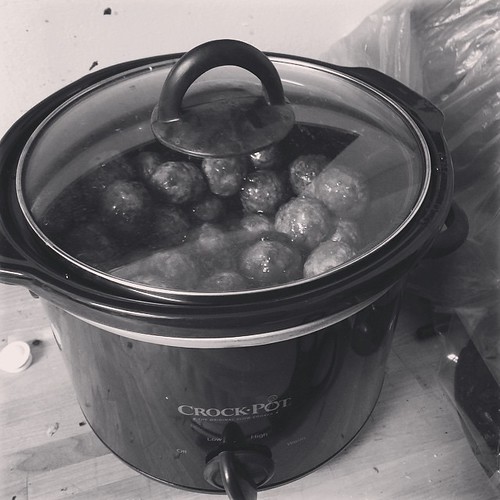There’s something undeniably heartwarming about a kitchen appliance that stands the test of time, especially when it’s one that’s woven into the fabric of family traditions. Take, for instance, the story of a mom’s 30-year-old Crock-Pot that’s still going strong. This isn’t just a tale of impressive product longevity; it’s a testament to the countless meals and memories that have simmered within its ceramic walls. Every St. Paddy’s Day, the aroma of corned beef fills the air, a reminder of the years gone by and the slow-cooked meals that have graced the dinner table.
The Charm and Common Issues of the Crock-Pot
The Crock-Pot, a staple in many households, has become more than just a kitchen gadget; it’s a vessel for comfort food and a catalyst for bringing people together. It’s no wonder that the mere mention of a Crock-Pot can evoke a sense of nostalgia, a longing for the simplicity and warmth of home-cooked meals that bubble away without fuss. But as with any beloved appliance, there comes a time when users may encounter issues—a hot crock, a slow cooker that cooks too quickly, or, heaven forbid, a dried-out or charred dinner disaster.
It’s a common enough problem to warrant a flurry of emails from concerned home cooks, all seeking advice on how to prevent their slow-cooked dreams from turning into overcooked nightmares. The frustration is palpable, and the disappointment of returning home to a less-than-perfect meal is something many can relate to. But fear not, for there is hope and help at hand.
The first step in troubleshooting a temperamental slow cooker is to ensure you’re using the right size for your culinary endeavors. A slow cooker performs best when it’s adequately filled—ideally two-thirds full—to allow for even heating and proper cooking. With a variety of sizes on the market, it may be worth considering a smaller model if you frequently find yourself making meals for one or two. While it may go against the grain of the ‘bigger is better’ mentality, the right-sized Crock-Pot can make all the difference in achieving slow-cooked perfection.
For those new to the world of slow cooking, starting with simple, foolproof recipes is key. Soups, stews, and casseroles are the ideal candidates for your first foray into this cooking method. They’re forgiving, flavorful, and a great way to get a feel for how your Crock-Pot behaves. From taco soup to white chili, these dishes are the building blocks that will lead you to more complex and adventurous meals.
Moisture retention is another common concern with slow cookers. Some models have vent holes or slots for spoons, which can lead to steam escaping and food drying out. A simple fix is to cover the stoneware with parchment paper or foil before placing the lid on top. This helps to trap moisture and keep your meal succulent. Just remember to be cautious when removing the cover, as the steam can be quite forceful.
For those with larger Crock-Pots who want to make smaller portions, the solution is to place an oven-safe dish inside the cooker. This creates a smaller cooking vessel, preventing food from overcooking and ensuring that even the tiniest of meals come out just right. Whether you use corningware, pyrex, or a metal pan, this technique can save the day when cooking for one or two.
The Crock-Pot has been a beloved fixture in kitchens for nearly half a century, with over 100 million sold. It’s a brand that’s synonymous with slow cookers, and for good reason. Despite the dramatic portrayal of a faulty slow cooker in the popular TV show ‘This Is Us,’ it’s important to remember that the safety and design of Crock-Pot slow cookers make such events nearly impossible. The brand stands by its products, ensuring that they exceed safety standards and regulations.
As we navigate the world of slow cooking, it’s essential to remember that these appliances are designed for our convenience and safety. With the right care and knowledge, we can continue to enjoy the delicious, slow-cooked meals that have become a staple in our culinary repertoire. So, let’s not let fiction sway our confidence in these kitchen heroes. Instead, let’s embrace the joy of cooking low and slow, confident in the knowledge that our trusty Crock-Pots are up to the task.

Cooking Techniques and Creative Exploration with the Crock-Pot
We’ve covered the basics of slow cooking and how to avoid common pitfalls, let’s dive into the art of mastering this culinary technique. Slow cooking is not just about throwing ingredients into a pot and forgetting about them; it’s about understanding the nuances that can turn a simple meal into a mouthwatering experience. Here are some tips and tricks to help you perfect your slow-cooked dishes and make the most out of your trusty Crock-Pot.
Layering is your friend. When adding ingredients to your slow cooker, think about the cooking times of each component. Root vegetables take longer to cook than meat, so they should go in first, at the bottom of the pot, where they can get more heat. On top of these, you can layer your meat, and then any softer vegetables or herbs should be added towards the end of cooking to prevent them from turning to mush.
Another key to success is to brown your meat before adding it to the slow cooker. This extra step might seem like a hassle, but it’s worth it. Browning meat on the stove top adds a depth of flavor that you simply can’t achieve with slow cooking alone. The Maillard reaction, which occurs when proteins and sugars in the meat are heated, creates complex flavors and aromas that will elevate your dish.
Spices are slow cooking’s best friends. The low and slow method allows for spices to infuse throughout the dish, creating layers of flavor that are rich and satisfying. Don’t be afraid to be generous with seasonings, and consider toasting them beforehand to intensify their flavor. However, be cautious with salt. It’s better to under-season and adjust the taste towards the end of cooking than to end up with an overly salty dish.
Let’s talk about liquids. Unlike other cooking methods, slow cookers create a sealed environment that prevents moisture from escaping. This means that less liquid is required. If you’re adapting a standard recipe for the slow cooker, reduce the liquid by roughly a third. This will prevent your meal from becoming too soupy. And remember, if you’re adding wine or beer, let it simmer on the stove first to cook off the alcohol and concentrate the flavor.
For those who love a thick and hearty sauce, there’s a trick for that too. If you find your dish is too watery at the end of cooking, simply mix a tablespoon of cornstarch with a little cold water and stir it into your slow cooker. Turn the heat to high and let it bubble for a few minutes to thicken up. Alternatively, you can remove the lid for the last half-hour of cooking to allow some liquid to evaporate.
Let’s address the elephant in the room: the fear of leaving your slow cooker on while you’re out of the house. It’s understandable to be cautious, especially after dramatic portrayals in popular media. However, as mentioned earlier, modern slow cookers are designed with safety in mind. They operate at low temperatures and wattages, and their components are tested rigorously. If you’re still concerned, consider using a smart plug that allows you to monitor and control your appliance remotely.
Don’t forget about the versatility of the slow cooker. It’s not just for stews and casseroles. You can make bread, cakes, and even yogurt in your Crock-Pot. The key is to experiment and not be afraid to try new things. The slow cooker can be a tool for creativity in the kitchen, allowing you to explore a variety of cuisines and dishes.
Your slow cooker is capable of so much more than you might think. With a little bit of knowledge and a dash of creativity, you can transform everyday ingredients into extraordinary meals. Remember to layer your ingredients, brown your meat, be generous with spices, adjust your liquids, and don’t shy away from new culinary adventures. Embrace the slow cooker as a culinary companion that’s there to make your life easier and your meals tastier. So, go ahead, give that old Crock-Pot a pat on the back, and let’s get cooking!
Related posts:
Help! My Slow Cooker cooks too fast!
Crock-Pot tells ‘This Is Us’ fans: Our slow cookers won’t kill you
It’s Too Darn Hot (or, Crockpot Woes, why did they raise the temperatures to make them cook hotter??)





